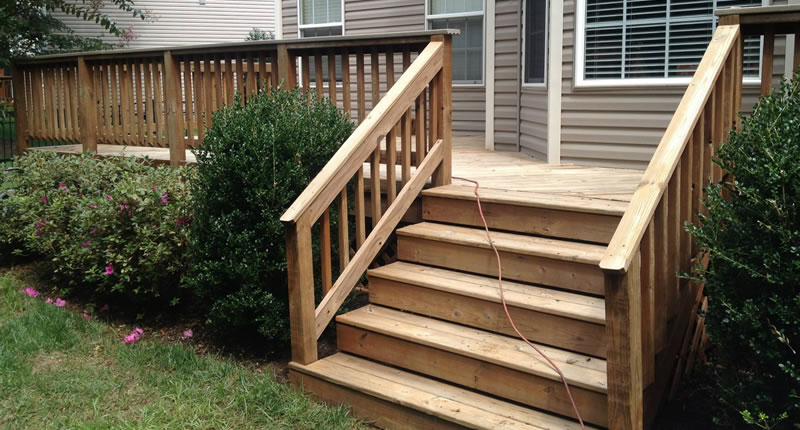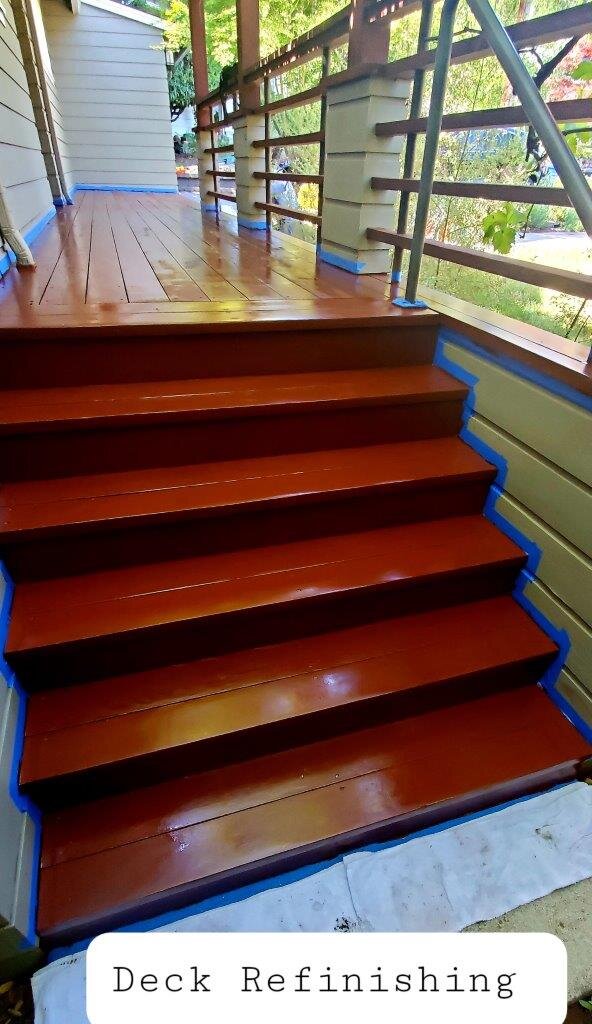Deck Staining 101: Whatever You Need to Know for a Do It Yourself Task
From preparing the deck surface area to choosing the appropriate type of tarnish and grasping the application strategies, each step plays a crucial function in attaining an expert coating. Join us as we unravel the crucial guidelines and expert pointers for mastering the art of deck discoloration, ensuring a successful Do it yourself project that will leave your deck looking flawless.
Importance of Deck Staining
Deck staining is a vital upkeep task that protects the durability and appearance of outside wooden structures. By applying a coat of stain to the deck's surface area, you develop a protective barrier that assists protect against wetness penetration, UV damage, and decaying of the wood.
Moreover, deck staining boosts the all-natural appeal of the wood by highlighting its grain and structure. It offers an opportunity to customize the look of the deck by picking from a selection of discolor coatings and shades. Whether you like a transparent stain that showcases the timber's all-natural color or a solid tarnish that adds a pop of color, the appropriate tarnish can raise the overall visual of your outside home. Basically, normal deck discoloration is an easy yet reliable way to guarantee your deck continues to be structurally sound and visually pleasing for several years to find.
Deck Prep Work Steps

After cleansing and fixing, fining sand the deck is necessary to smooth out rough surfaces and open up the wood's pores to better absorb the stain. Once the deck is tidy, completely dry, and smooth, protect any nearby plants, furnishings, or surface areas with a decline towel prior to using the deck discolor.
Selecting the Right Spot
Selecting the suitable stain for your deck is a crucial decision that straight influences both its look and toughness. When picking the ideal discolor, there are several factors to consider to ensure an effective do it yourself job.
To start with, you need to determine in between transparent, semi-transparent, and strong stains. Clear stains permit the natural grain of the timber to show with but supply minimal defense against UV rays and dampness. Semi-transparent stains give a compromise in between color and security, while strong stains supply the most security yet cover the wood grain.
Following, consider the kind of timber your deck is made from, as various stains function better with specific timber species. Cedar and redwood decks commonly look best with a clear or semi-transparent tarnish to highlight their natural elegance. Pressure-treated wood might profit from a strong tarnish to conceal flaws.
Finally, consider the climate in your area. If you experience extreme winters months or intense sunlight, go with a discolor with UV defense and resistance to severe weather. By thoroughly thinking about these aspects, you can select a discolor that improves your deck's aesthetics and longevity.

Applying Discoloration Properly
When thinking about the application of discolor to your deck, it is necessary to pay attention to the particular attributes of the stain picked and exactly how it connects with the kind of timber and ecological problems formerly deliberated. Before starting the staining process, make sure that the deck surface area is tidy, completely dry, and devoid of any previous finishings or debris. It is suggested to check the picked tarnish on a tiny low-profile location of the deck to make certain compatibility and attain the wanted shade and coating.
Use the discolor along the size of the deck boards to stop uneven merging - deck staining companies near me. It is essential to function with the wood grain to boost the natural appeal of the deck and allow for far better penetration of the discolor.
Maintenance and Treatment Tips

One more vital facet of deck upkeep is protecting it from the elements. Routinely trimming close-by foliage can likewise avoid leaves and branches from building up on your deck and triggering prospective damage.
Conclusion
Finally, deck staining is an essential action in maintaining the appearance and long life of your exterior room. By effectively preparing the deck, picking the ideal discolor, applying it correctly, and following maintenance pointers, you can make certain a i loved this beautiful and durable coating that will certainly last for many years to come. Remember to routinely inspect and care for your tarnished deck to keep it looking its best.
Join us as we untangle the necessary guidelines and insider tips for understanding the art of deck discoloration, guaranteeing a successful Do it yourself task that will certainly leave your deck looking remarkable. - deck cleaning services
In significance, routine deck staining is a straightforward yet efficient way to ensure your deck continues to be structurally sound and aesthetically pleasing for years to come.
When the deck is clean, completely dry, and smooth, safeguard any kind of close-by plants, furnishings, or surfaces with a decline fabric prior to applying the deck tarnish.Next, take into consideration the type of timber your deck is made of, as different discolorations work much better with certain timber species.When thinking about the application of stain to your deck, it is necessary to pay close attention to the details qualities of the tarnish chosen and just how it horse fence interacts with the kind of wood and ecological problems formerly deliberated.